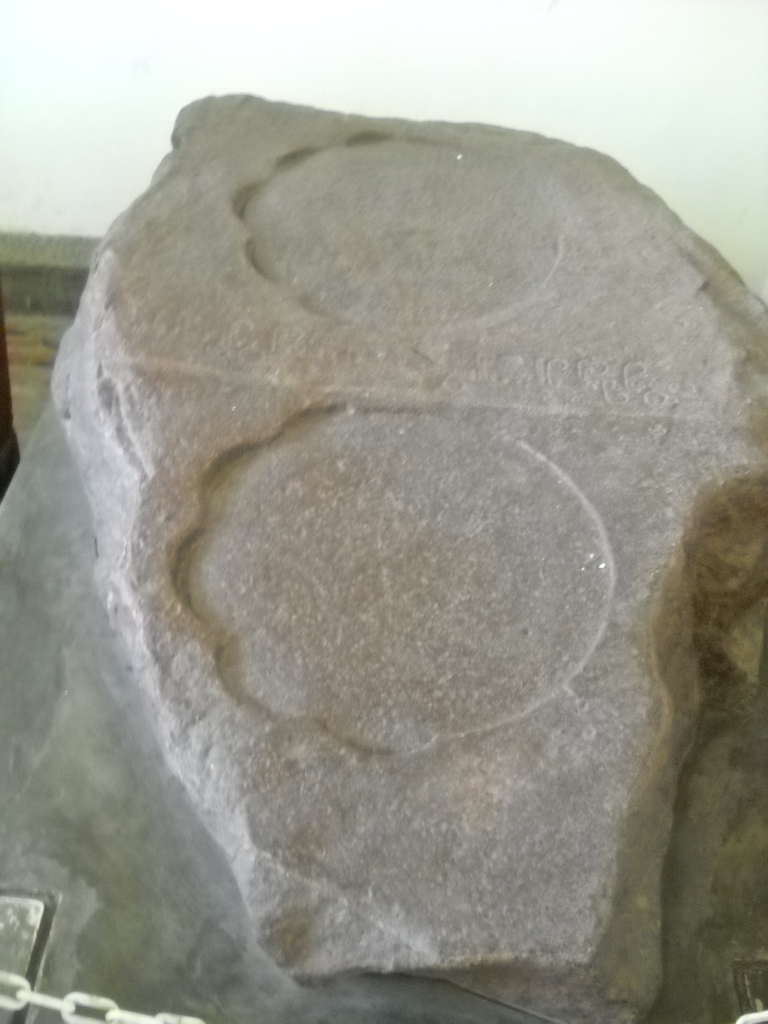Kebon Kopi I Inscription on:
[Wikipedia]
[Google]
[Amazon]
 Kebon Kopi I also known as Tapak Gajah inscription (
Kebon Kopi I also known as Tapak Gajah inscription (
 Kebon Kopi I also known as Tapak Gajah inscription (
Kebon Kopi I also known as Tapak Gajah inscription (elephant
Elephants are the largest existing land animals. Three living species are currently recognised: the African bush elephant, the African forest elephant, and the Asian elephant. They are the only surviving members of the family Elephantidae ...
footprint inscription), is one of several inscriptions dated from the era of Tarumanagara
Tarumanagara or Taruma Kingdom or just Taruma is an early Sundanese people, Sundanese Greater India#Indianised kingdoms, Indianised kingdom, located in western Java, whose 5th-century ruler, Purnawarman, produced the earliest known inscript ...
Kingdom circa 5th century. The inscription bearing the image of elephant footprint, which was copied from the elephant ride of King Purnawarman
Purnawarman or Purnavarman is the 5th-century king of Tarumanagara, a Hindu Indianized kingdom, located in modern-day West Java, Jakarta and Banten provinces, Indonesia. Purnawarman reigned during the 5th century, and during his reign he crea ...
of Tarumanagara, which is equated with Airavata
Shachi.html" ;"title="Indra (alias Sakra) and Shachi">Indra (alias Sakra) and Shachi riding the five-headed Divine Elephant Airavata, Folio from a Jain text, Panch Kalyanaka (Five Auspicious Events in the Life of Jina Rishabhanatha), c. 1670� ...
, the elephant vahana
''Vahana'' ( sa, वाहन, or animal vehicle, literally "that which carries, that which pulls") denotes the being, typically an animal or mythical, a particular Hindus, Hindu God is said to use as a vehicle. In this capacity, the vahana ...
(vehicle) of Indra.
The inscription was discovered in Kebon Kopi village, Bogor
Bogor ( su, , nl, Buitenzorg) is a city in the West Java province, Indonesia. Located around south of the national capital of Jakarta, Bogor is the 6th largest city in the Jakarta metropolitan area and the 14th overall nationwide.Kebon Kopi II inscription, and named as such to differ it from this later inscription dated from
 This inscription is written with Pallawa script in
This inscription is written with Pallawa script in
''~ ~ jayavisalasya Tarumendrasya hastinah ~ ~''
''Airwavatabhasya vibhatidam ~ padadvayam'' Translation:
"Behold, here it looks like a pair of feet ...like
Sunda Kingdom
The Sunda Kingdom ( su, , Karajaan Sunda, ) was a Sundanese Hindu kingdom located in the western portion of the island of Java from 669 to around 1579, covering the area of present-day Banten, Jakarta, West Java, and the western part of Cen ...
era.
Content
Sanskrit
Sanskrit (; attributively , ; nominalization, nominally , , ) is a classical language belonging to the Indo-Aryan languages, Indo-Aryan branch of the Indo-European languages. It arose in South Asia after its predecessor languages had Trans-cul ...
which are arranged into the form of the Anustubh metrum Shloka
Shloka or śloka ( sa, श्लोक , from the root , Macdonell, Arthur A., ''A Sanskrit Grammar for Students'', Appendix II, p. 232 (Oxford University Press, 3rd edition, 1927). in a broader sense, according to Monier-Williams's dictionary, is ...
, which is flanked by a pair of carved images of the elephant's foot.
Transcription:''~ ~ jayavisalasya Tarumendrasya hastinah ~ ~''
''Airwavatabhasya vibhatidam ~ padadvayam'' Translation:
"Behold, here it looks like a pair of feet ...like
Airavata
Shachi.html" ;"title="Indra (alias Sakra) and Shachi">Indra (alias Sakra) and Shachi riding the five-headed Divine Elephant Airavata, Folio from a Jain text, Panch Kalyanaka (Five Auspicious Events in the Life of Jina Rishabhanatha), c. 1670� ...
, the elephant ride of the great Taruma ruler in... and (?) glory"
See also
* Tarumanagara Kingdom *Tugu inscription
The Tugu inscription is one of the early 5th century Tarumanagara inscriptions discovered in Batutumbuh hamlet, Tugu village, Koja, North Jakarta, in Indonesia. The inscription contains information about hydraulic projects; the irrigation and ...
* Ciaruteun inscription
Ciaruteun inscription ( id, Prasasti Ciaruteun) also written Ciarutön or also known as Ciampea inscription is a 5th-century stone inscription discovered on the riverbed of Ciaruteun River, a tributary of Cisadane River, not far from Bogor, West Ja ...
References
{{reflistSources
* H.P. Hoepermans "Hindoe-Oudheden va Java (1864)" ROD 1913:74 * J.F.G. Brumund "Bijdragen tot de kennis va het Hindoeisme op Java" VBG. XXXIII 1868:63-64 * A.B. Cohen Stuart "Heilige Voetsporen op Java" BKI 3(X) 1875:163-168. Juga di bahasa Inggris berjudul: "Sacred Footprints in Java" Indian AntiQuary IV. 1875:355-dst * H. Kern "Eenige Oude Sanskrit-Opschrifte n van 't Maleische-schiereil and" VMKAWL 3(1).1884:9 *P.J. Veth
Pieter Johannes Veth (2 December 1814 in Dordrecht - 14 April 1895 in Arnhem) was a Dutch professor of geography and ethnology and the first Chairman of the Royal Netherlands Geographical Society. He was also the father of Daniël David Veth, ...
, Java II. 1878:46; I.1896:27
* R.D.M. Verbeek "Oudheden van Java" VBG. XLVI. 1891:30-31.
* J. Ph. Vogel "the Earliest Sanskrit Inscription opsachriften of Java" POD. I. 1925:27-28. Plate 32,33.
* Bambang Soemadio (et.al. editor) Sejarah Nasional Indonesia II, Jaman Kuno. Jakarta: Departemen Pendidikan dan Kebudayaan 1975: 39-40; 1984: 40
Tarumanagara
Kebon Kopi I